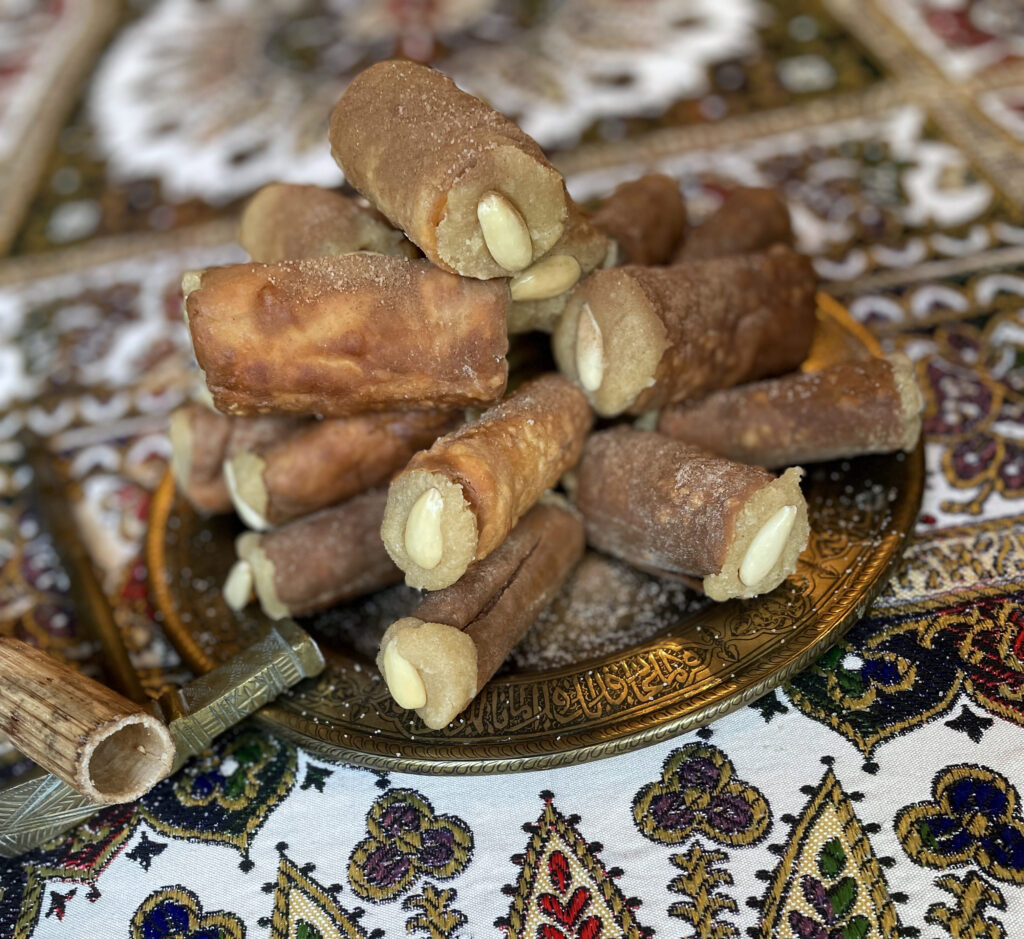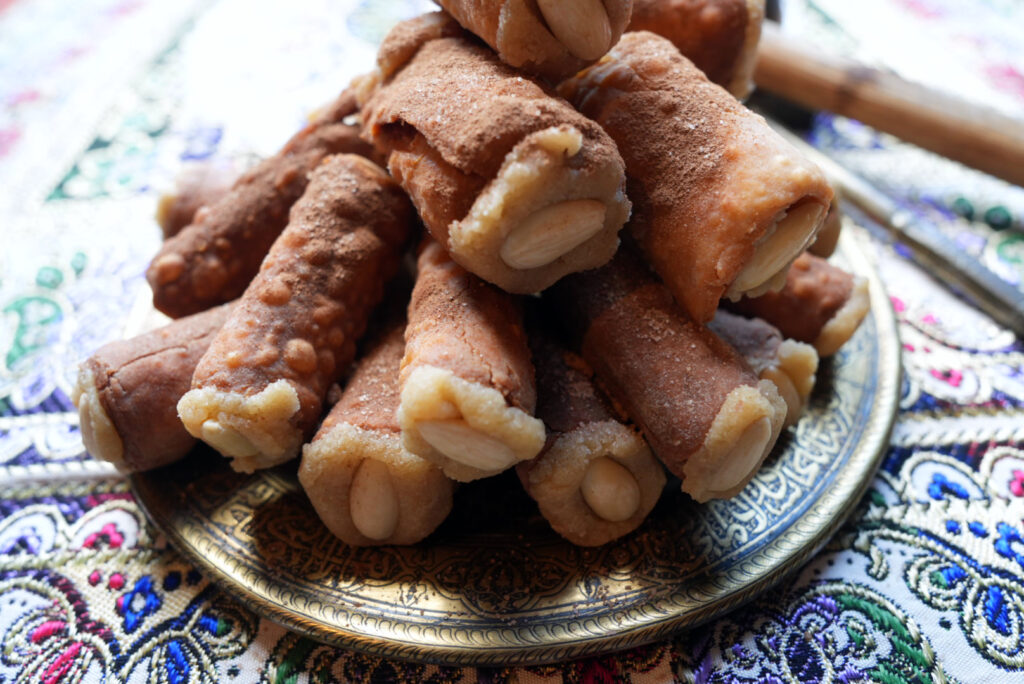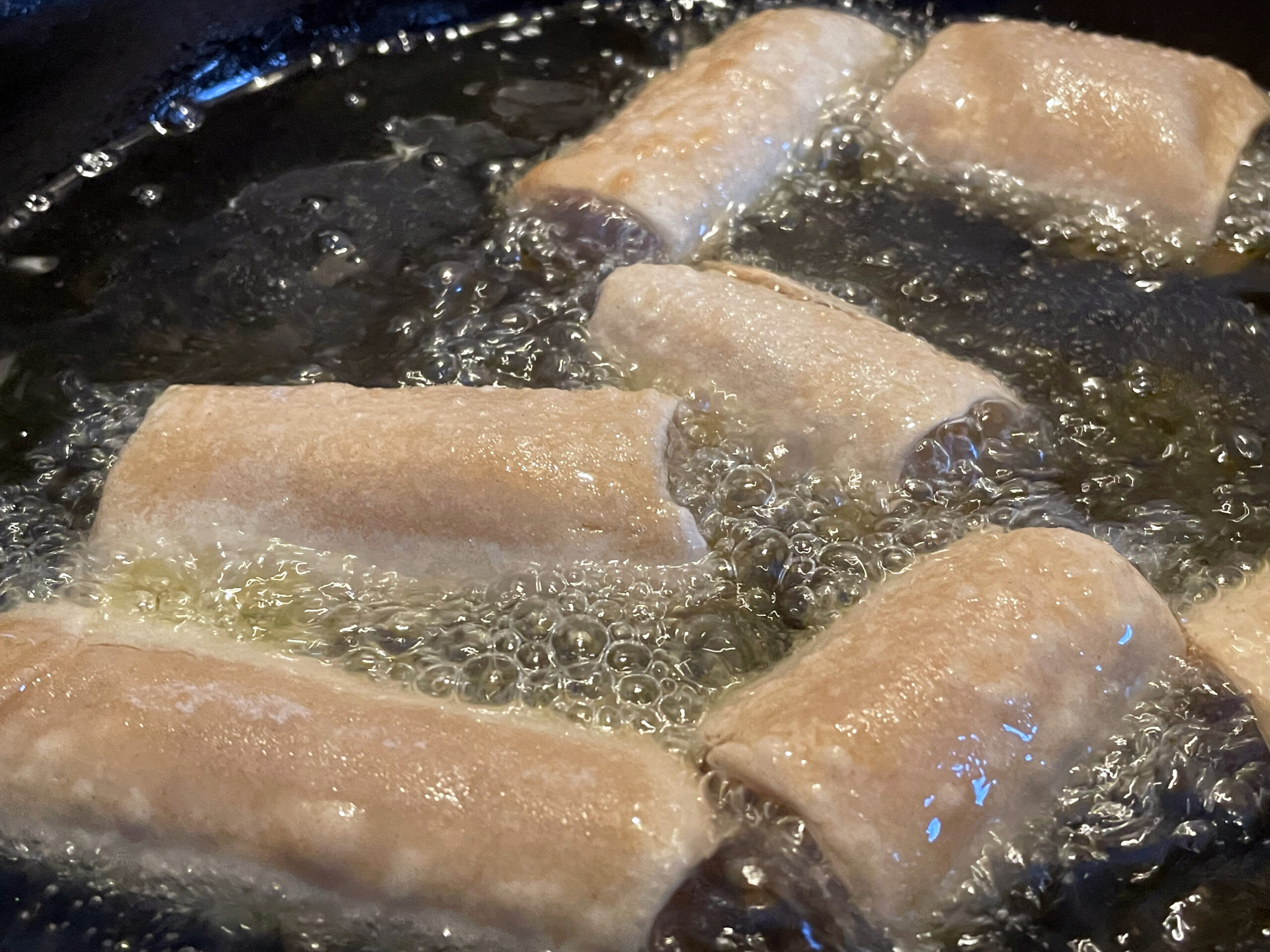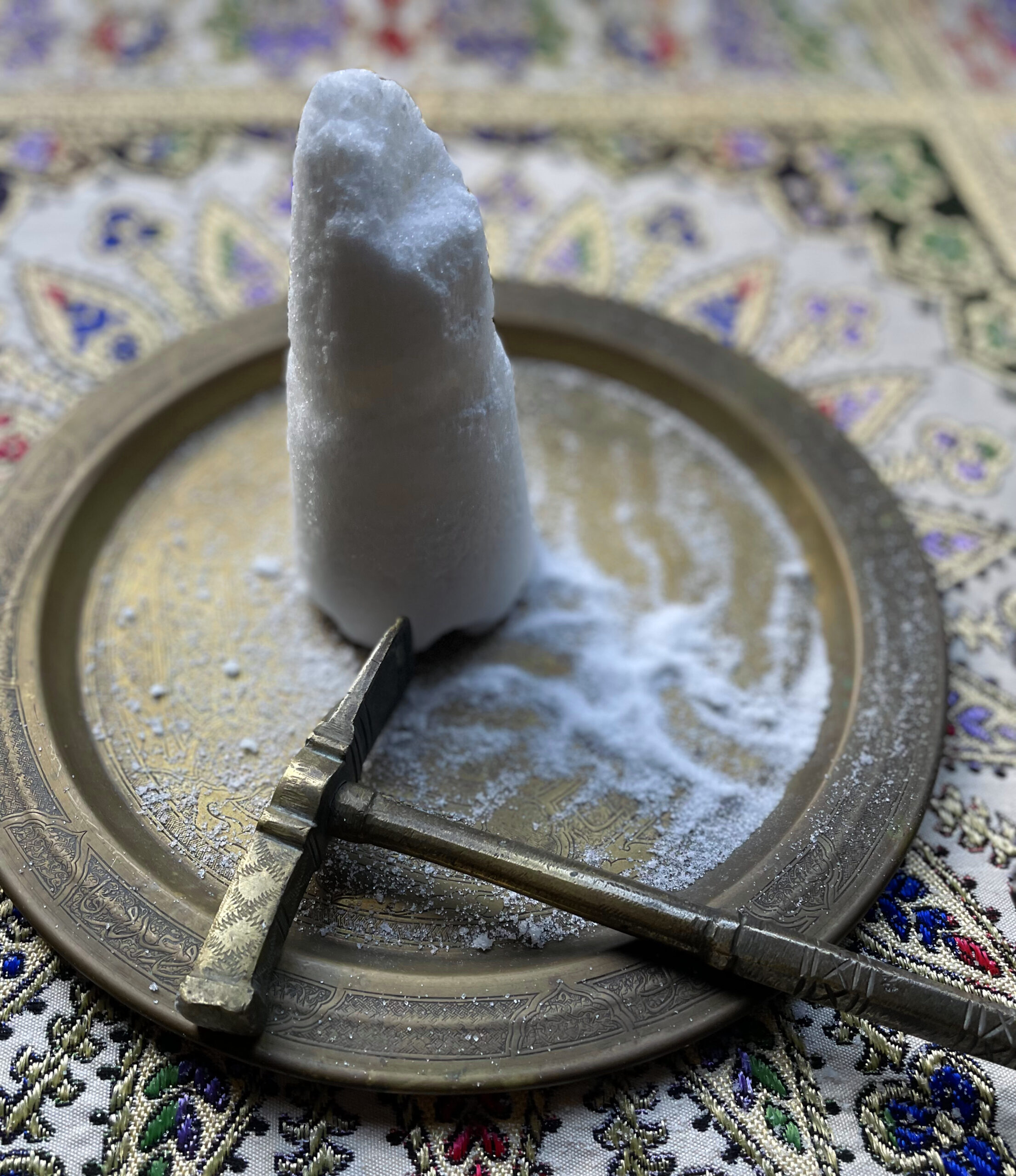This recipe from The Exile’s Cookbook for ‘stuffed tubes’ (قنانيط محشوة, qanānīṭ mahshuwa) is one of the ancestors of the modern Sicilian speciality cannoli, albeit sans the cheese filling. In fact, it was quite a popular sweet across the Muslim world, since recipes can also be found in a collection from Mamluk Egypt (14th c.), where they appear as ‘Zaynab’s fingers’ (أصابع زينب, aṣābiʿ Zaynab), but they go back even further, to Abbasid times, when they were called ḥalāqīm (حلاقيم) — the plural of ḥulqūm (حلقوم, ‘wind-pipe’) — and were made with a filling of walnuts and sugar, with the ends dipped in syrup and sprinkled with dyed sugar candy.
It takes a bit of a delicate touch to make the 13th-century Andalusian version of these wonderful sweets, but the result is fantastic! After kneading flour into a dough, it is wrapped around cane reeds, with the dough cut into small tubes. While the dough is drying, it is time to make the filling which will consist of skimmed honey, pounded almonds and various aromatics. After carefully removing the dough tubes, they are fried in olive oil and then stuffed with the filling, topped off with an almond at either end. Arrange on a plate, dust with cinnamon and sugar, and then it’s time to tuck in!




